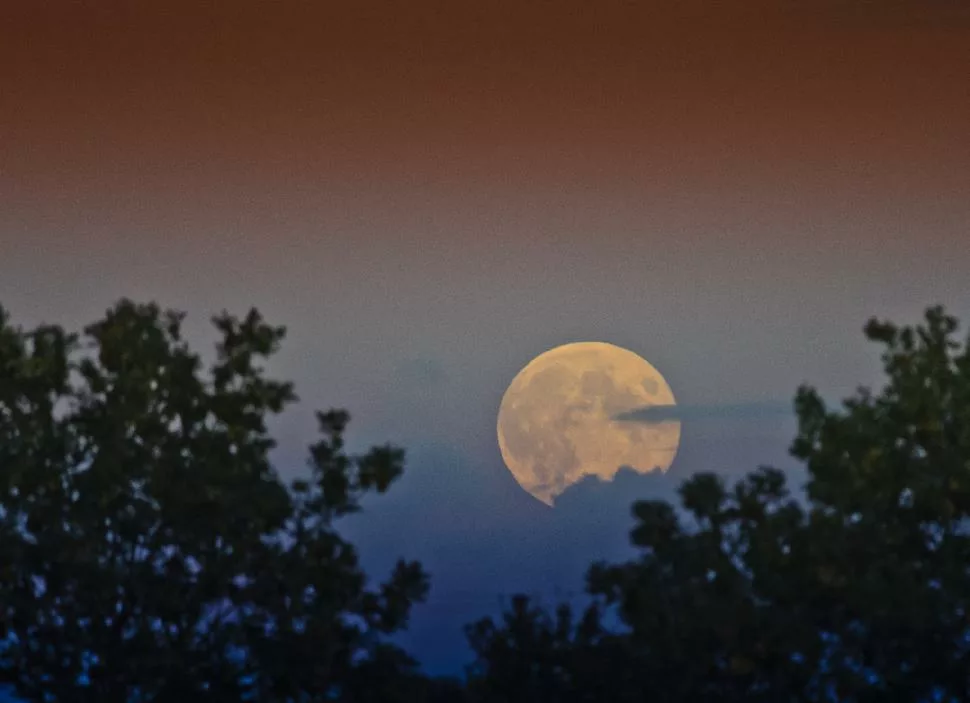The Happy Camper: Harvest Moon Time

We all gaze up at it. Admire it more when it’s enlarged. And we all wonder if Armstrong found any cheese on it during his 1969 visit.
To hike or paddle under a full moon is also one of the most uplifting experiences an outdoorsy person can ever have. I’ve done it a few times and consider each time to be a dreamscape indelibly imprinted on my consciousness. But what do we know about the moon?
For starters, it’s the second-brightest object in the sky, meaning if you’re floating around the universe with Captain Kirk and his crew, you’d notice the moon before the Earth. The moon also affects tides, as well as our moods. It’s said to create “lunacy” or change people into werewolves. An ancient Jewish legend states that if one doesn’t see their shadow in the moonlight, they are destined to die before the year is up.
The term “harvest moon” comes from a bright moon lightning up the farm fields to allow for a longer working day during harvest time, and it is also the title of one of Neil Young’s most-popular albums.
To understand how the moon moves across the night sky, forget the notion that the sun sets and the moon rises. It doesn’t work that way. The moon fully rotates around the earth in 27 days but it takes 29 days for a full moon to change over to another full moon. Sounds confusing, but the mix-up in days is based on the fact that the Earth is also orbiting the sun, and the sun has everything to do with the fullness of the moon. This means the sun is never in the same place it was 27 days prior. The moon also moves eastward and the Earth has to move a little more to the east than the moon does so we can see it. Of course, that also means each moon-rise is approximately 50 minutes later each evening.
The only time this is different would be during September and October (harvest time) in the northern hemisphere (and March and April in the southern hemisphere). At this time, the moon takes a sharp turn north because the Earth also changes its position. Because of this, during the fall a full moon comes up shortly after the sun sets, giving farmers extra time on the fields and a legendary musician a title for his song.
A harvest moon appears bigger and brighter with a more golden or even reddish tone than most full moons. What you’re seeing is an illusion. The gold or red colour is actually caused by the atmospheric haze you’re looking through while viewing the moon. This phenomenon is created due to the moon itself being lower on the horizon than normal. In fact, even stars look reddish in colour when you spot them lower in the horizon. And the enlarged size is due to the horizon acting more as a prism than a lens, even squishing the moon a fair bit as well. To prove this, look at the moon upside down and through your legs. The moon will appear smaller because it’s viewed on a steeper angle than when standing upright. Doing such an experiment, however, will also emphasize the “lunacy” theory; but who are we to judge?
The Harvest Moon is also known as the Singing Moon or Blood Moon, and the Blue Moon is the third full moon in a season (each of which has four full moons). Mythology and folklore have also given various names to each month’s moon. The following is the most common list:
- January: Wolf Moon
- February: Ice Moon
- March: Storm Moon
- April: Growing Moon
- May: Hare Moon
- June: Mead Moon
- July: Hay Moon
- August: Corn Moon
- September: Harvest Moon
- October: Hunter’s Moon
- November: Snow Moon
- December: Winter Moon














